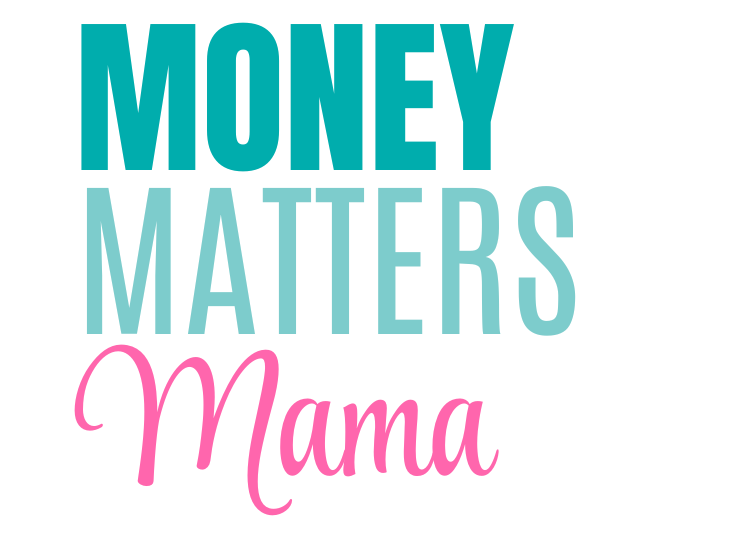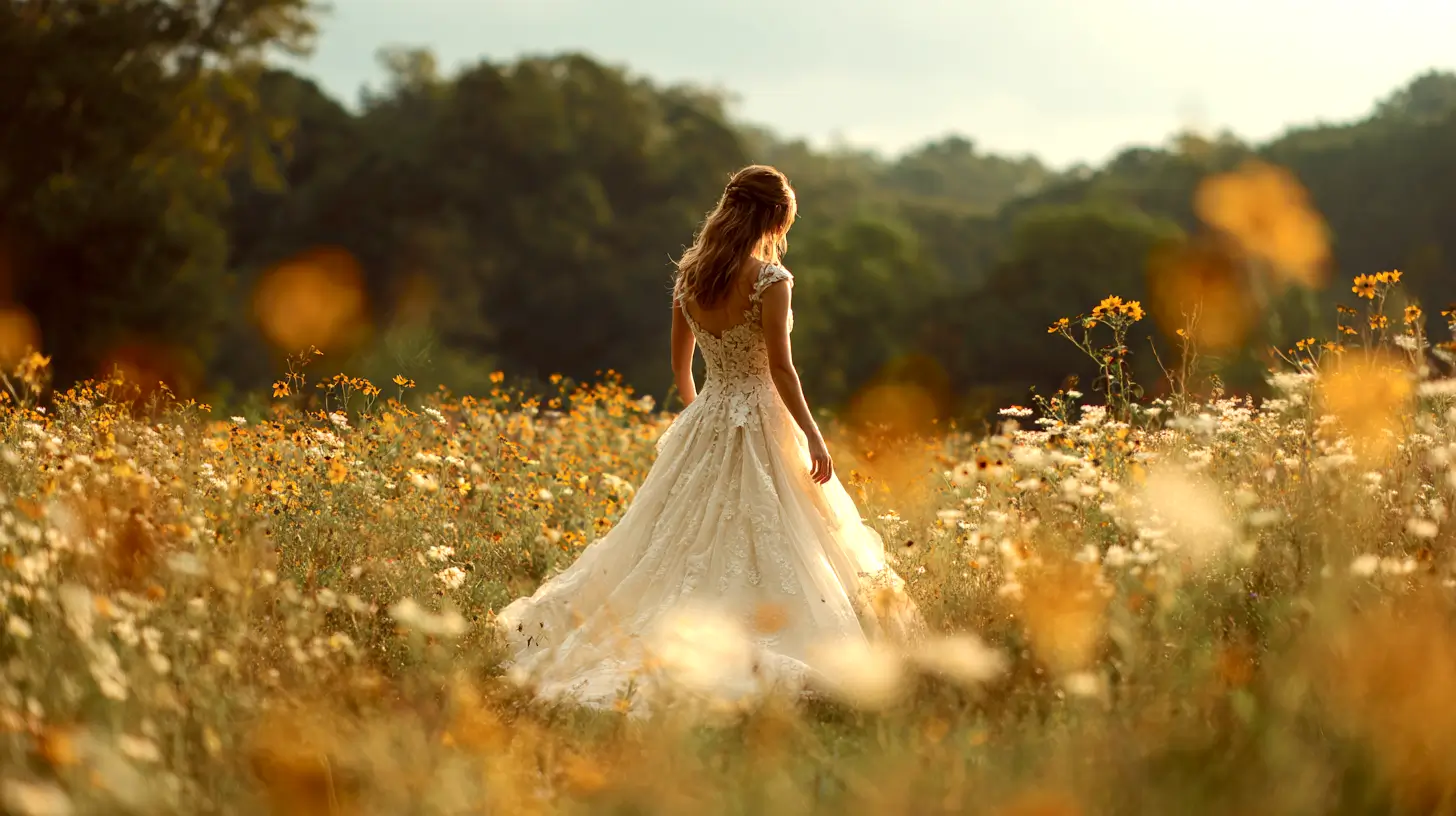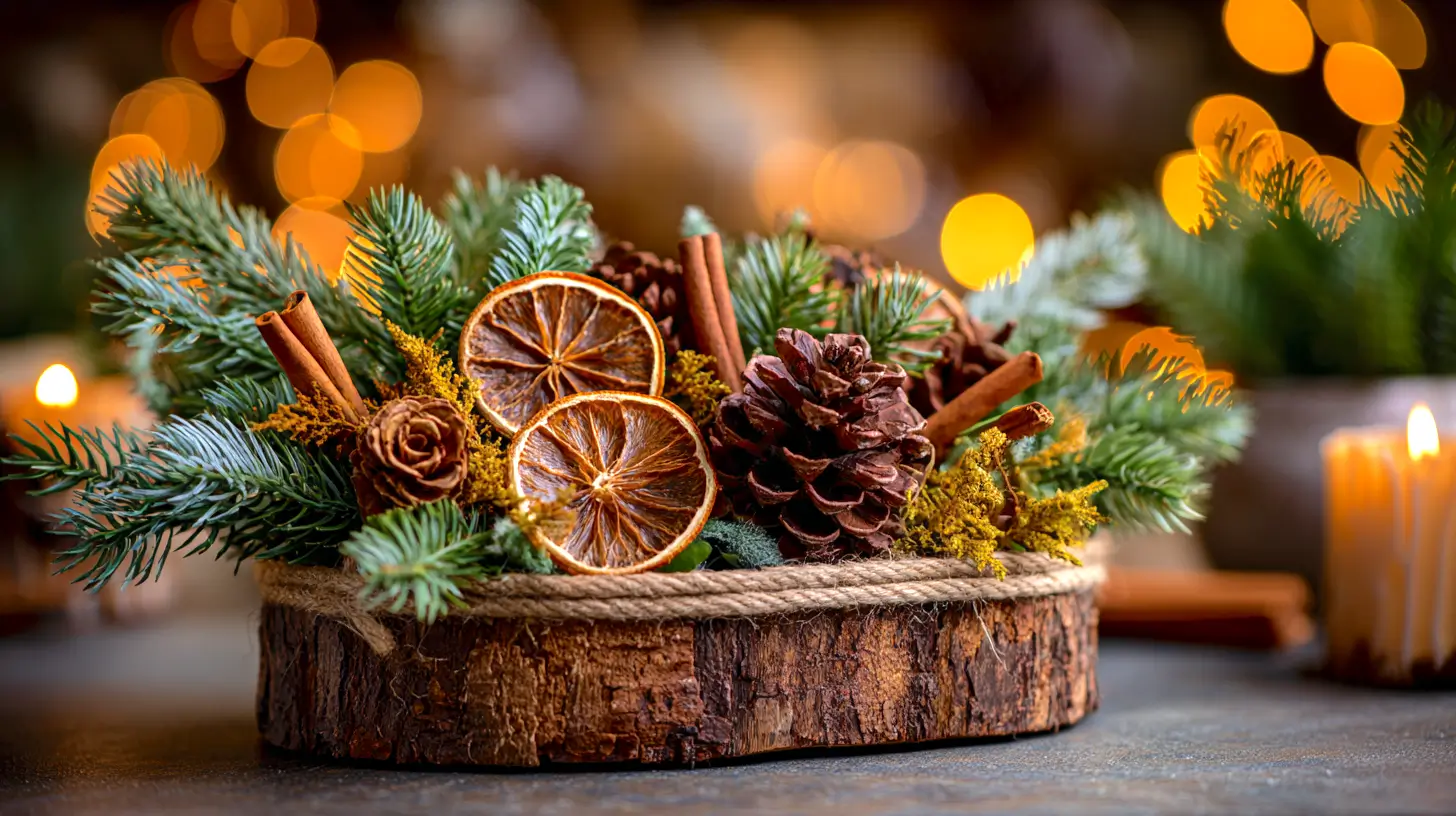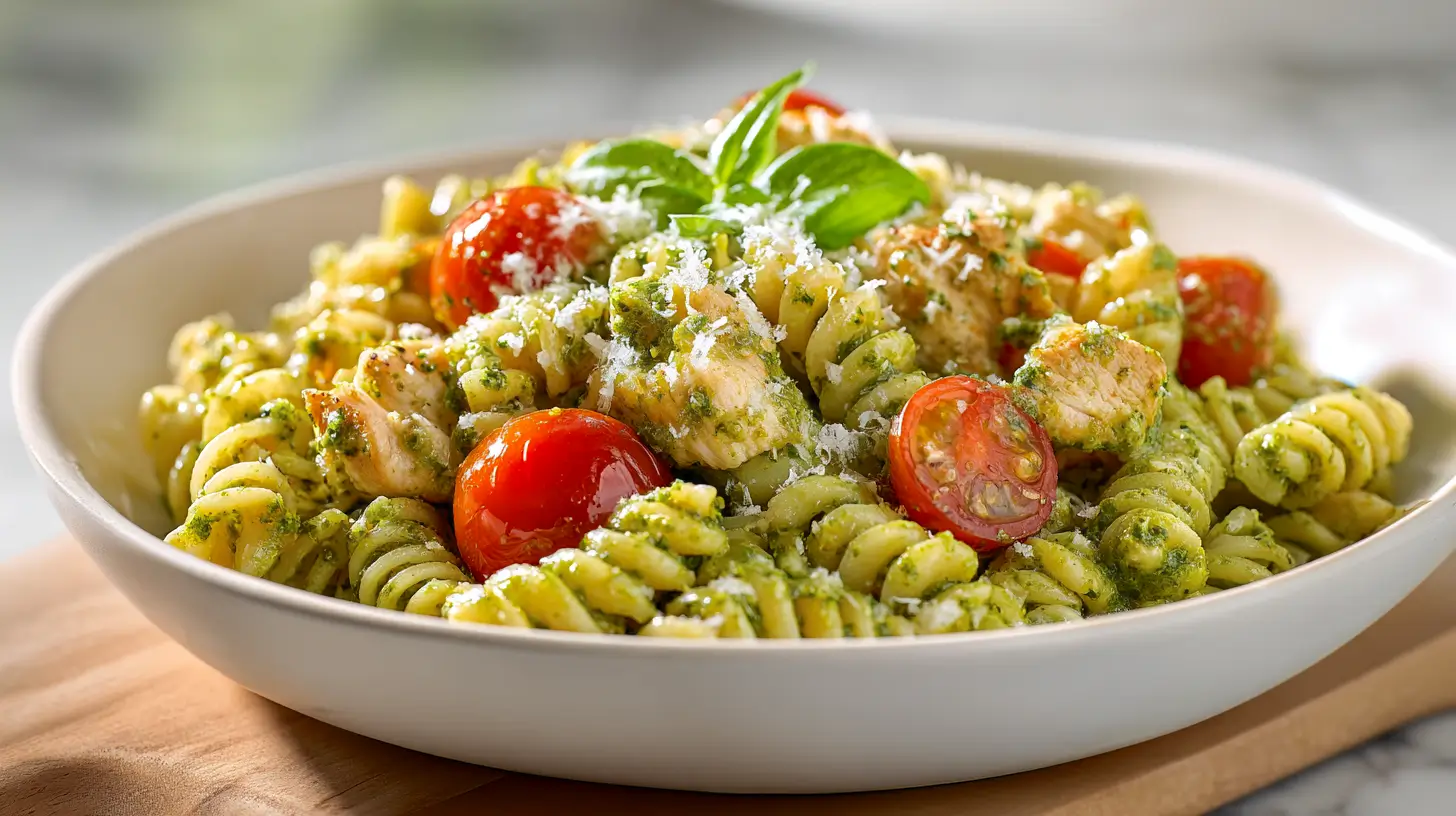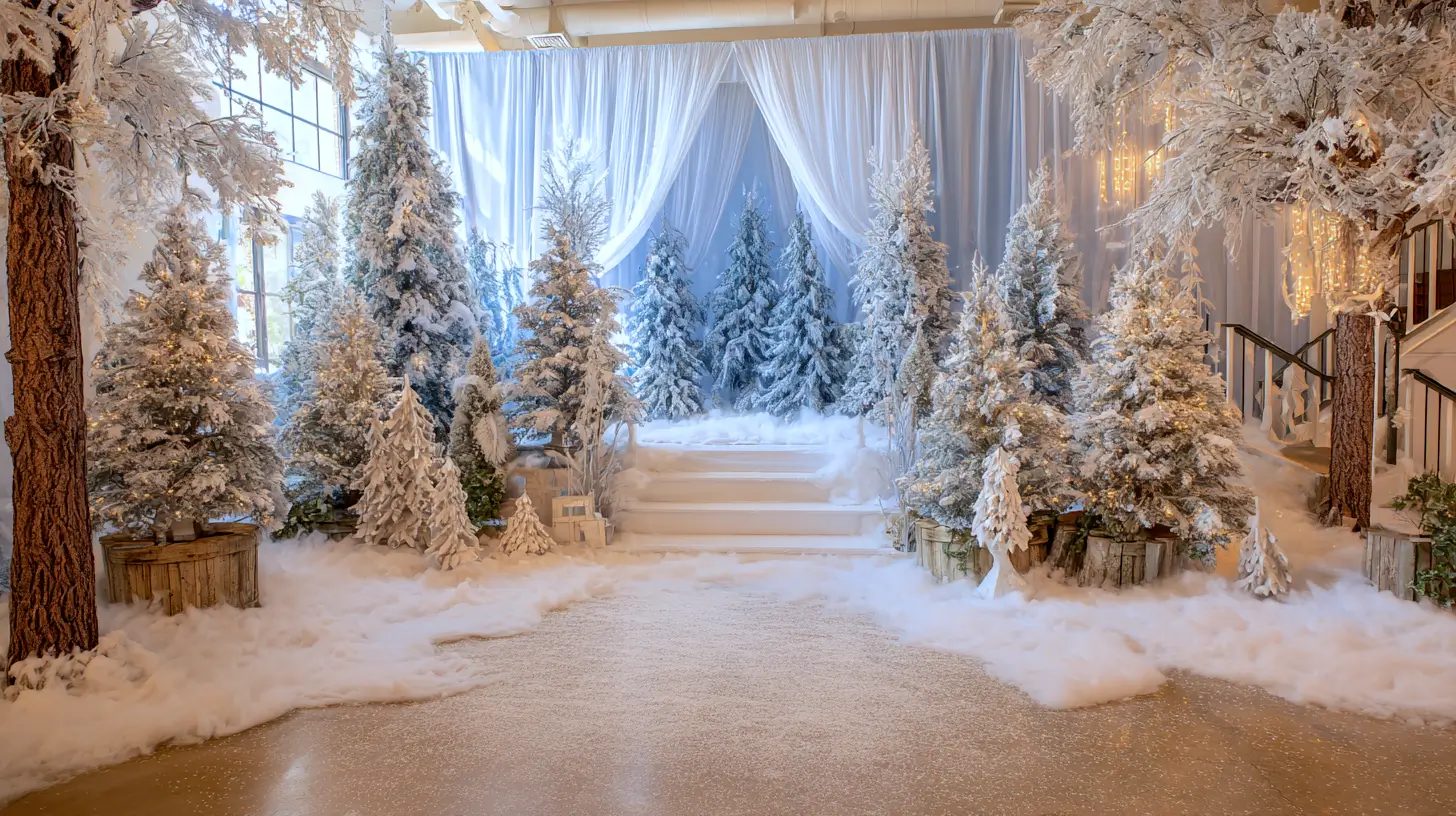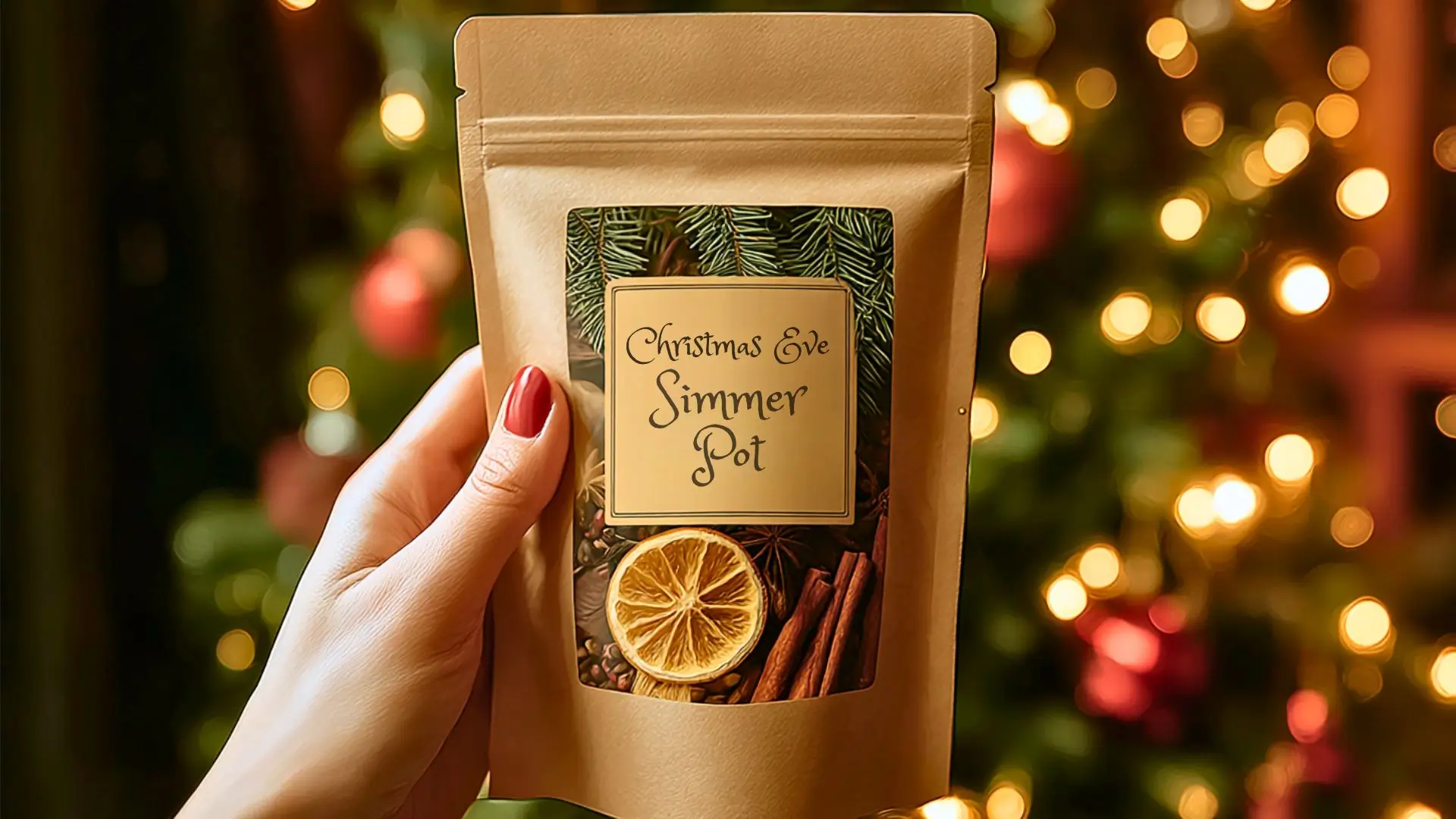Wedding flowers can drain a budget faster than almost any other detail, and I’ve seen so many brides give up on their vision because of the price tag. I want something different for you. I want your wedding to feel gorgeous, intentional, and stylish without wrecking your bank account. The truth is that wedding flowers are emotional. They whisper romance and beauty, so the industry uses that emotion to justify wild markups. I live in Orlando, and I see huge wedding budgets thrown around here every season. I also see that most couples could spend far less and still get stunning results. That is why I want to walk through a mixed approach that blends real florals, fake florals, rentals, and smart strategy for the best outcome at the best price.
I don’t believe you should settle for tiny bouquets or bare tables. I also don’t believe you need wall-to-wall roses for your guests to feel enchanted. I’ve found that a few well-placed floral moments matter more than a dozen forgettable ones. With the right plan, you can soften costs, focus your statement pieces, and skip the traps that blow up budgets. I want you to have clarity and confidence as you build a floral plan that looks expensive but acts responsible. A plan that leaves room in the budget for a honeymoon splurge or a solid emergency fund.
This post focuses on strategy, not pressure. I will show you why flowers get so expensive, where to use real blooms, where to fake it, when to reuse pieces, and how to negotiate. I will also share ways to get that romantic rose-and-peony look without hiring a luxury floral studio. You will learn how to buy, rent, reuse, and repurpose. You will also discover the tricks florists don’t rush to share. By the end, you’ll know exactly how to make smart choices, dodge overpriced extras, and still walk into a breathtaking ceremony you will remember forever.
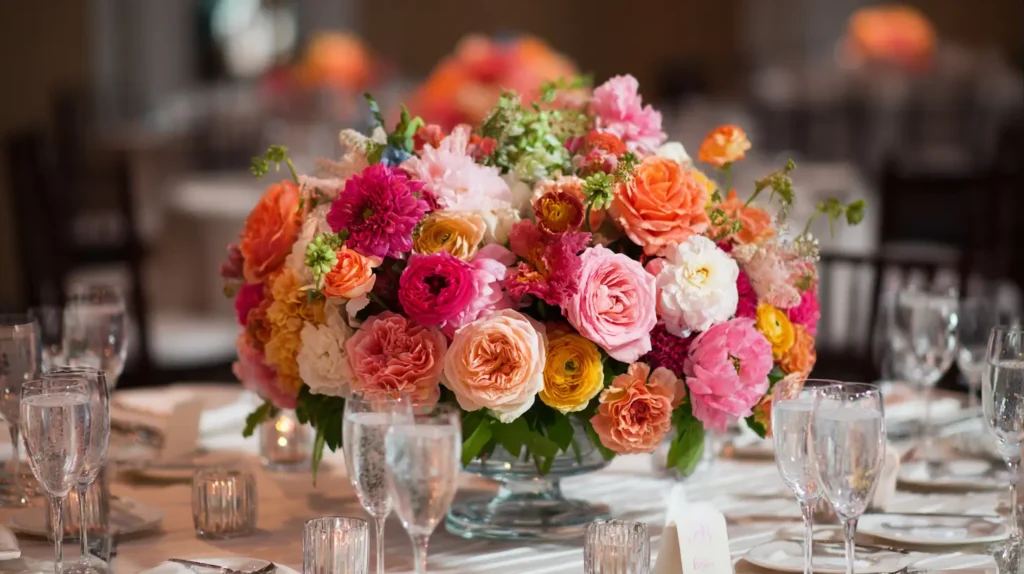
Some of the links on this site are affiliate links, which just means I may earn a small commission (at no extra cost to you) if you make a purchase. You can check out my full disclosure for all the details.
Why Wedding Flowers Get So Expensive So Fast
Wedding flowers are expensive because the industry attaches emotion to every stem. The florist knows you want beauty, and beauty can be leveraged. You are also paying for labor. Many bouquets require hours of prep, wiring, taping, trimming, and arranging. Delivery, setup, and teardown add extra hands, so costs climb again. Fresh blooms also have a shelf life, and that risk drives prices higher. When a florist orders flowers, they must buy more than they need. Some wilt or bruise. Some break. You fund that loss.
Seasonal availability also drives price. Roses and peonies cost far more during peak wedding months because demand explodes. If your heart is set on specific blooms, you will pay more when those blooms are not abundant. I’ve learned that weather in growing regions can also change pricing without warning. A storm can wipe out a crop, and brides pay for it months later.
There is also the rush factor. Weddings stack on weekends. Florists handle multiple couples at once. Speed matters, and speed costs. Then comes the markup. The floral industry uses a multiplier formula that can shock most brides. Flowers are cheaper than you think at wholesale, but by the time you see them, the price has multiplied several times. That is why a simple centerpiece can cost more than a fancy dinner for two.
Once you see the pattern, you can break it. The key is a mixed approach and a clear plan. When you stop treating florals like one giant task, you gain control. You can segment your needs to gain control and clarity. Focus on impact instead of volume so every choice has purpose. Place flowers only where guests notice them most. Skip the fluff that drains cash and crowds the design. Soon you will see how much power you gain once you understand how the game works and where to push back.
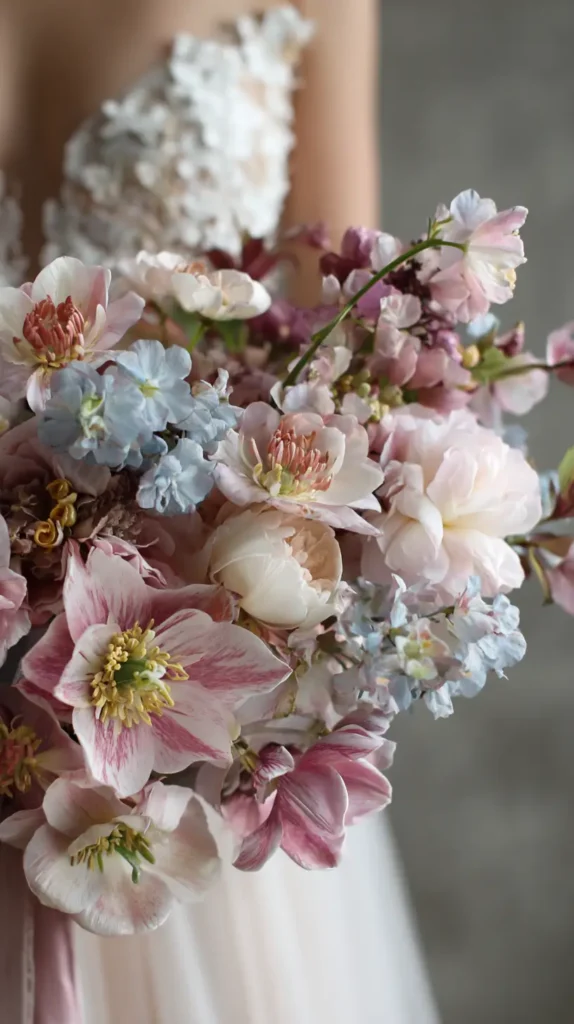
Where Real, Fake, and Rented Wedding Flowers Make the Most Sense
I like a mixed strategy because it protects your budget while keeping your look fresh and romantic. Real flowers belong in the spots guests will stare at most. Your bouquet should be real. You will hold it in photos, and you want that soft, natural movement. A boutonniere can also be real, because it is small and affordable. I also like real blooms for close-up table pieces where guests sit for long stretches. Fresh roses and peonies on reception tables create atmosphere.
Fake flowers shine in wide-shot areas. Aisles, arches, railings, signs, and entry pieces eat hundreds of dollars when they are real. Fake stems can fill space for a fraction of the price. Good faux florals photograph well and hide distance. Guests do not press their noses against them. Silk arrangements are also light, reusable, and easy to place. You can build them weeks ahead. That saves stress and money.
Rentals solve the big-impact problem. Flower walls, greenery arches, and hanging pieces look dramatic, but buying them is pricey. Renting staged pieces gives you size without the cost. You can add a few real blooms to rented pieces if you want softness. No one needs to know the secret. You can also reuse ceremony pieces at the reception. The arch flowers can move behind the sweetheart table. Aisle pieces can slide onto welcome tables or bar stations.
The smartest floral budgets combine all three. Real where guests focus. Fake for filler and distance. Rentals for scale. This blend gives you a high-end look with a controlled total. Once you divide your floral plan by category, you stop overspending out of panic. You start assigning purpose to every stem. That purpose is what keeps budgets in check.
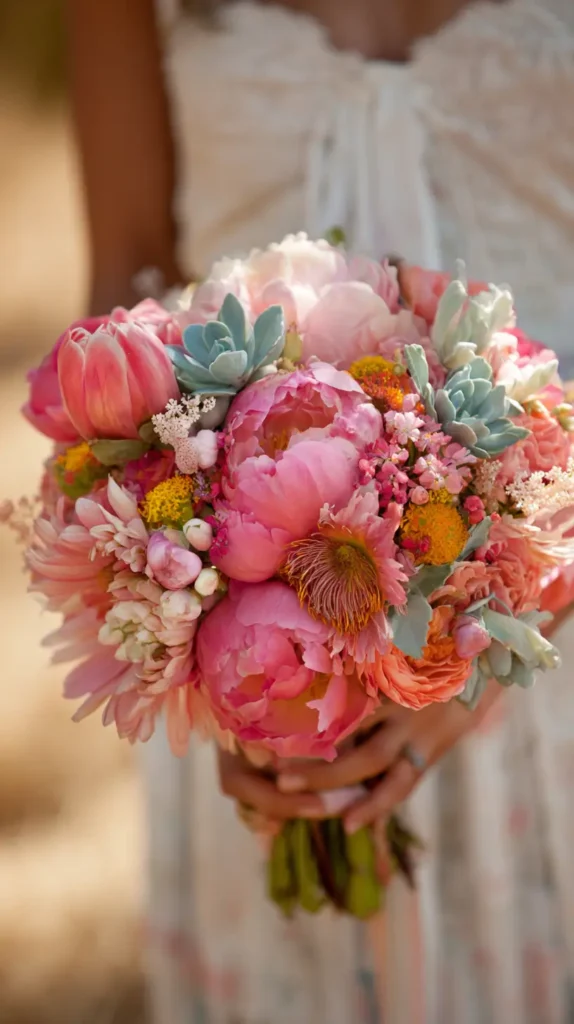
Budget Math That Actually Cuts the Floral Bill
You need numbers to save real money on wedding flowers. Start with a floral cap. Pick a total you will not cross. Then assign percentages. Ceremony pieces usually deserve less money than reception pieces because guests sit longer at the reception. I like the 25-75 rule. Twenty-five percent for ceremony, seventy-five for reception. The reception is where photos stretch and guests linger.
Then explore wholesale sources. Buying stems from wholesale clubs can cut costs by half. Supermarkets can also help, especially for greenery. Greenery fills space for cheap, and greenery photographs beautifully. If you choose real blooms, buy in season. Roses and peonies in season cost less. Out-of-season flowers punish your wallet. Swap pricey stems for lookalike blooms. Carnations, when grouped, can mimic peonies at a tiny price. Spray roses can replace garden roses when budgets get tight.
Reuse pieces. Ceremony flowers should not die after thirty minutes. Move them. Assign helpers. Pick someone to transfer arrangements once the ceremony ends. Small tasks save big money. Do not ignore candles. Candles give romance, fill space, and cost little. They reduce your flower needs.
Also avoid scattered micro pieces. Tiny florals on every surface bleed money. Focus on clusters with volume. A few bigger arrangements beat twenty little ones. Trade tall vases for low bowls to reduce stem count. Ask your florist to cut labor by simplifying designs. Labor drains budget faster than flowers. Simple shapes save hours.
Rent vases. Do not buy them. Skip floral add-ons at venue bars and buffets. Guests do not stare at food tables. You can stretch your dollars by directing blooms only where attention naturally falls. Budgets shrink when every flower earns its place.
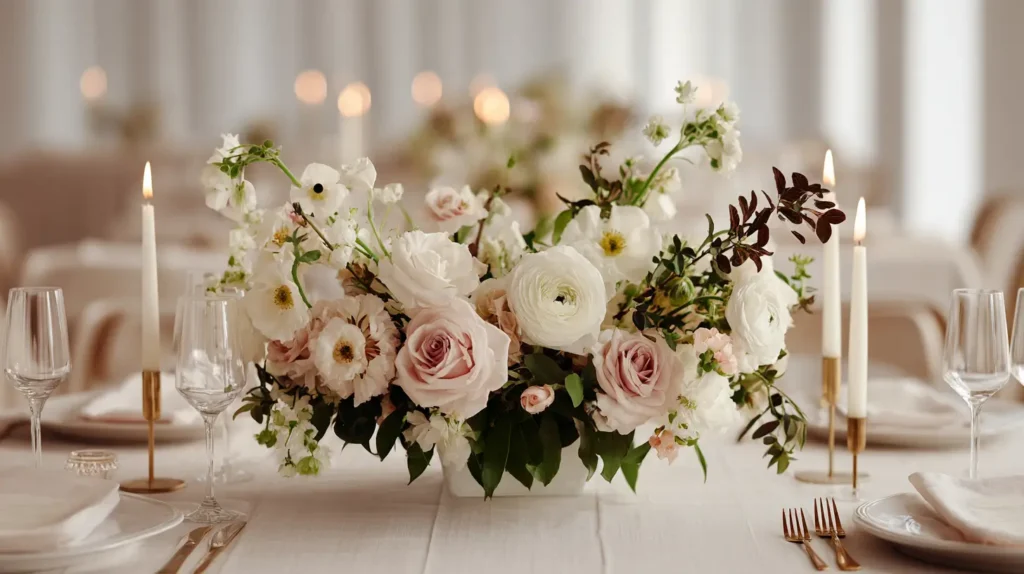
How To Avoid Sneaky Floral Upsells
Some wedding expenses are obvious. Others sneak into your contract when you’re tired, overwhelmed, or stressed. Florists often add tiny line items that look harmless. Those tiny items pile up fast. You can stop the creep with a few simple habits and a clear eye for traps. I like clear choices that protect the budget without losing style or intention. If you guard your plan, you guard your money.
Watch for these common upsells that inflate wedding flowers without improving the look:
• Premium stem upgrades you never asked for
• Extra filler blooms that boost labor time
• Charge-per-vase rentals you could source cheaper
• Double ribbon wraps or fancy pins for bouquets
• More boutonnières than people who will wear them
• Ceremony add-ons placed in areas guests barely see
• “Must-have” accent flowers that add nothing to photos
• Extra delivery fees for micro pieces
• Toss petals priced like luxury goods
• Surprise breakdown or late-night pickup charges
Use simple swaps to stop these upsells before they start:
• Ask for one ribbon choice, not layers
• Request greenery to fill space for less
• Reuse ceremony pieces at the reception
• Skip petals and use candles for the aisle
• Limit floral varieties to reduce labor
• Ask for clear pickup or teardown terms
• Cap the total stem count, not just the price
• Confirm every cost before signing anything
Small changes protect your floral budget and tighten your vision. When you avoid unnecessary add-ons, the entire plan feels more aligned. You also build trust with your vendors because your expectations stay clear. A clean contract brings peace, control, and confidence. Stand firm, ask questions, and stay intentional. You deserve beautiful results without surprise charges draining your joy.
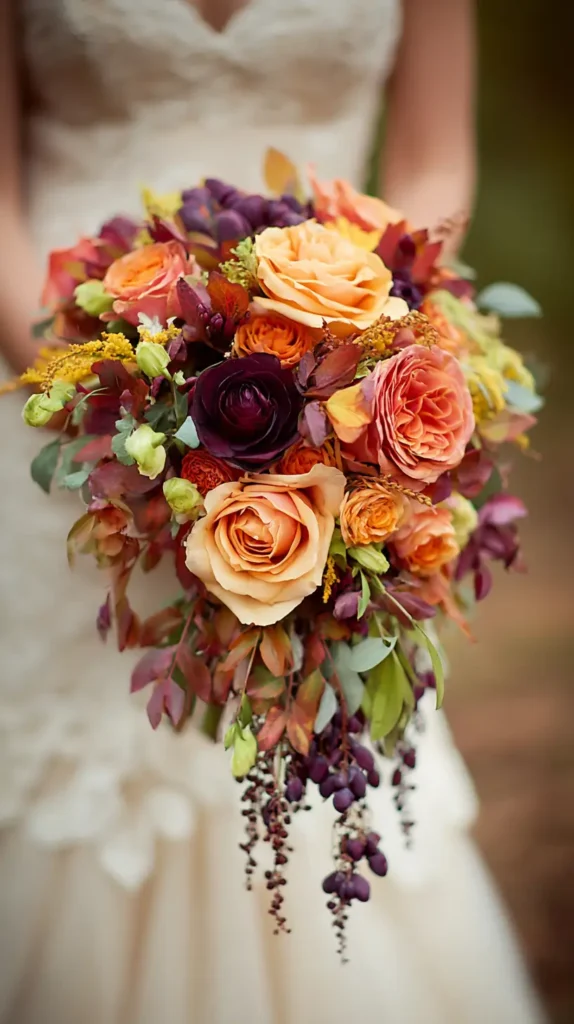
Buying vs DIY vs Renting
Each approach has pros and cons, and you should choose based on time, budget, and skill. Buying from a florist gives you polish, but it costs more. You trade money for labor, speed, and reliability. If you want a stress-free morning, this route brings peace. Florists deliver and set up on time, and that control has value.
DIY saves money but costs time. You will trim stems, hydrate blooms, and build pieces. You must transport them and fix surprises. If you enjoy creative work, DIY can feel rewarding. It also lets you prep fake pieces weeks ahead. You can build bridesmaid bouquets from silk stems and pay a fraction of the price. Then add one fresh element to tie everything together.
Renting solves scale problems. Big statement pieces often work best as rentals. You get size and drama for less because someone else reuses the structure after your event. Rented arches, aisles, and greenery walls look gorgeous in photos and take pressure off your budget. You can add a few fresh blooms to rented frames to soften the look.
Mixing these options gives you ultimate control. Let a florist handle your bouquet and boutonniere. DIY fake pieces for filler areas. Rent the big structures. This three-part strategy keeps the vision intact without ballooning the bill. It also reduces stress. You do not spend your wedding morning wiring flowers or rushing to fix broken stems.
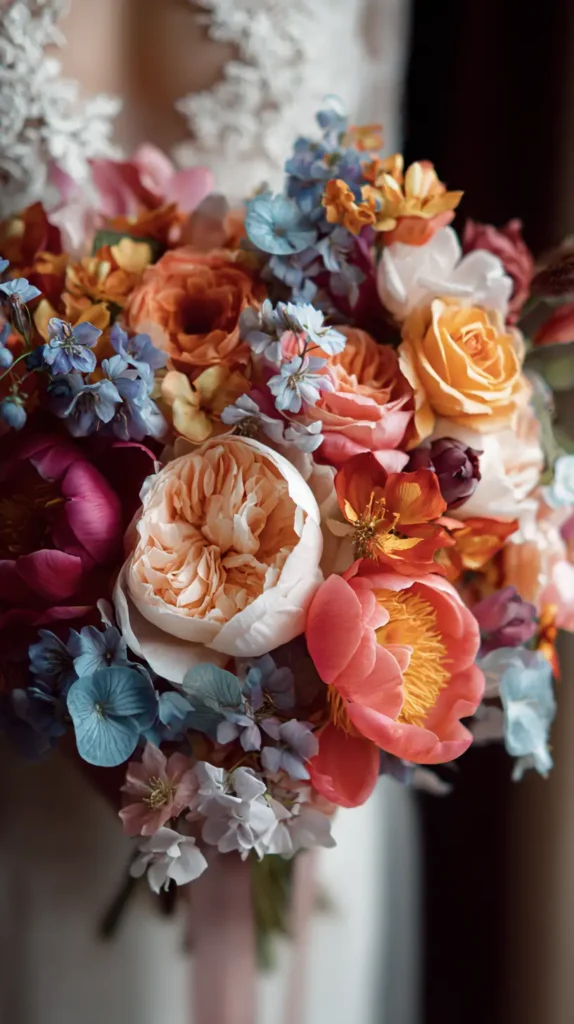
How to Negotiate, Trim, and Prioritize Without Looking Cheap
Negotiation works when you sound focused instead of frantic. Florists respect direction. Before you meet, make a list of must-have items and nice-to-have items. Ask for quotes in two versions. One full version, one trimmed version. When they send the quote, remove anything that does not impact photos or guest attention.
Cut aisle flowers first if the aisle is short. Guests only see them for a few minutes. Cut toss petals. Cut bar florals, restroom florals, and scattered minis on side tables. Ask for seasonal substitutions. Ask for fewer flower types. More variety means higher labor. Fewer varieties mean lower labor. Ask if they can reuse ceremony pieces at the reception. Ask for pickup instead of delivery if you have help. Delivery and teardown add large fees.
Use statements instead of apologies. Say, I want to stay under this number. What can we remove? That sounds directed, not desperate. Also ask for greenery-heavy designs. Greenery costs less and fills space. Ask if your florist offers rental pieces for containers. Buying vases or stands wastes money.
The florist wants your business. You can set the tone. A clear bride saves more than a confused bride. Confidence stretches every dollar.
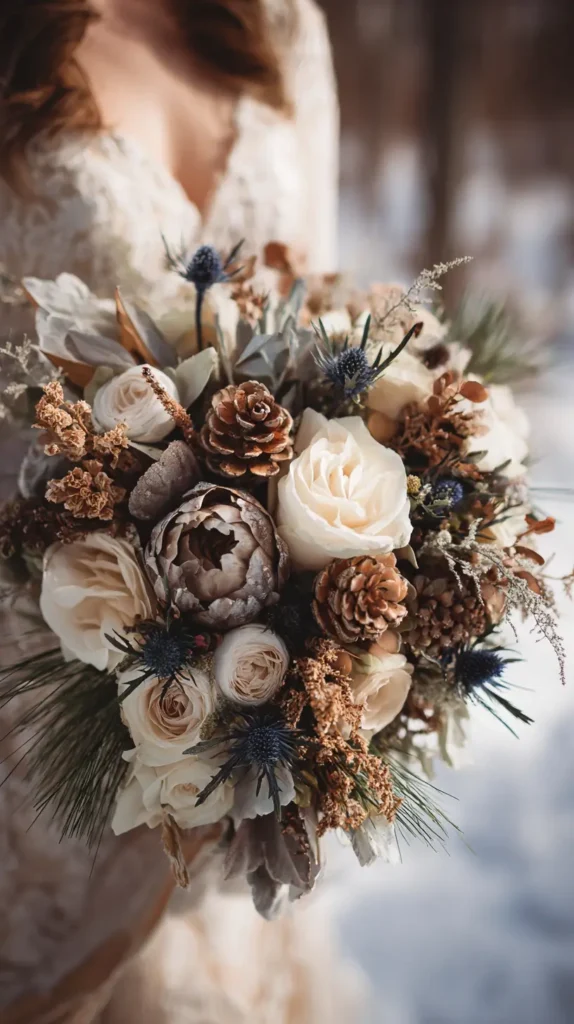
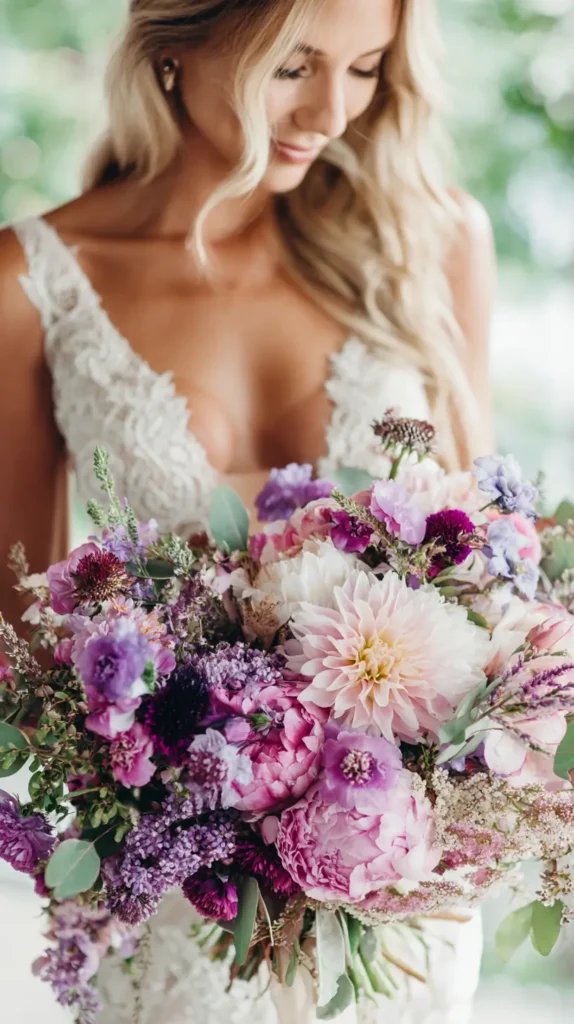
Pinterest-Worthy Looks on a Budget
The trick is focusing on impact. Place real roses and peonies in the bouquet, the sweetheart table, and a single main focal piece. Then layer in fake blooms and greenery for filler. Use clusters instead of scatter. A cluster reads romantic and full. A scatter reads thin and awkward.
Choose one big floral moment. It can be the arch, the sweetheart table, or the head table. Light the area with candles to boost the look. Add trailing greenery for movement. Use a limited color palette. A tight palette looks upscale. A wide palette looks busy. You can rent a floral backdrop and add small real touches to enhance it.
Reuse pieces from the ceremony at the reception to stretch the visual impact. Your guests will assume you ordered double. Lighting matters more than volume. Candles, string lights, and uplights make flowers look richer. A few smart tricks can make a budget look bridal and romantic.
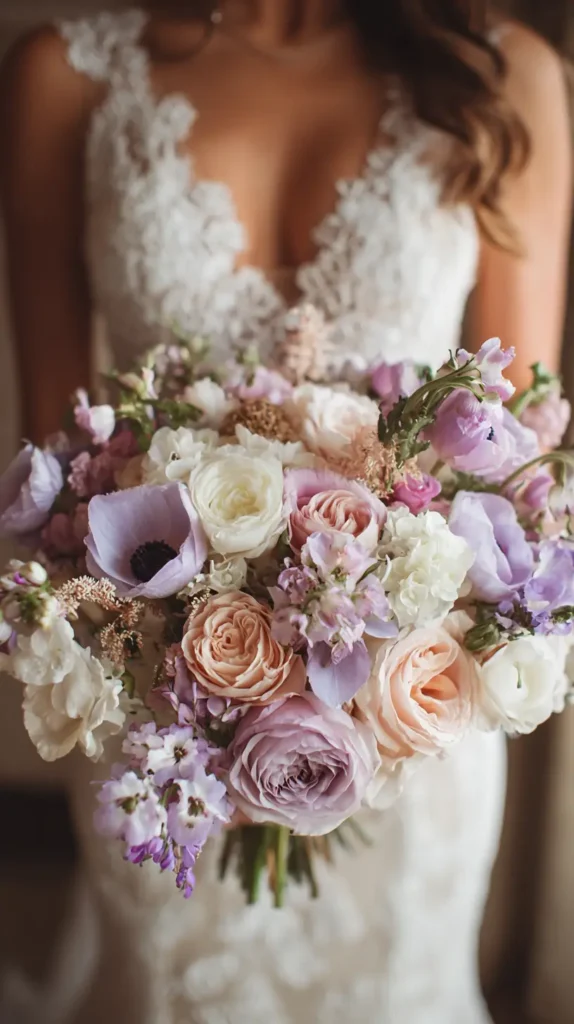
My Last Thoughts on Wedding Flowers and Saving Money
I believe beauty and responsibility can coexist. I’ve seen couples get pressured into overpriced plans for wedding flowers that did not match their values. I live in Orlando, and I see big wedding culture all the time. The pressure is loud, but you can quiet it when you trust your own priorities. Your wedding can feel elegant without emptying your savings. When you control placement, mix real and fake pieces, and use rentals with intention, you protect your peace and your wallet.
I love helping brides embrace smart choices because confidence shows in every detail. When you stop chasing excess, your vision becomes clear and meaningful. You can create romance without regret. Lighting, color, placement, and balance matter as much as blooms. You can also reuse pieces and redirect your dollars into moments that matter more in the long run. A strong plan lets you enjoy the day instead of worrying about invoices.
If you want inspiration, Pinterest can provide endless looks, but now you will see those ideas through a cost-conscious lens. You know the tricks, the markups, and the ways to stretch every stem. You can scroll for beauty without falling for pressure. I want your budget to support your future, not just your wedding.
Wedding flowers can still feel magical when you filter your choices through intention, clarity, and strategy. Place blooms where they count, skip the rest, and enjoy the freedom that comes with balance. When the day ends, you will remember the joy, the faces, the music, and the love. The flowers should support that joy, not overshadow it.
